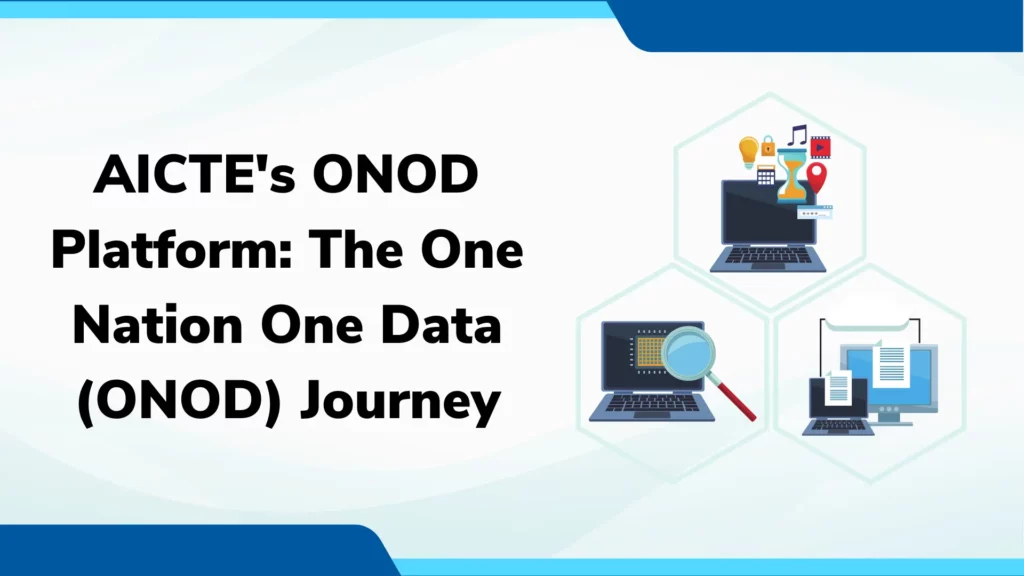
Article Contents
Introduction
In today’s rapidly evolving world, the quality of higher education holds the key to a nation’s development. This crucial aspect has received a powerful boost in India by introducing the One Nation, One Data (ONOD) platform.
The ONOD portal helps universities and colleges (HEIs) gather information in one place. It follows specific rules and is connected to the internet. It’s like a significant online form where HEIs can share their data.
Creating a single portal that gathers all sorts of information from universities for different needs like approval, accreditation, and ranking, this portal would come with a built-in feature to double-check the accuracy of the data by comparing different pieces of information.
Alongside this will be the latest technology-driven methods to replace the old-fashioned manual or mixed ways of assessing and accrediting universities.
This would help to reduce personal opinions and make things clearer and more believable. It will also make the ‘One Nation, One Data Platform’ even better by giving it a strong and reliable structure.
Role of ONOD architecture
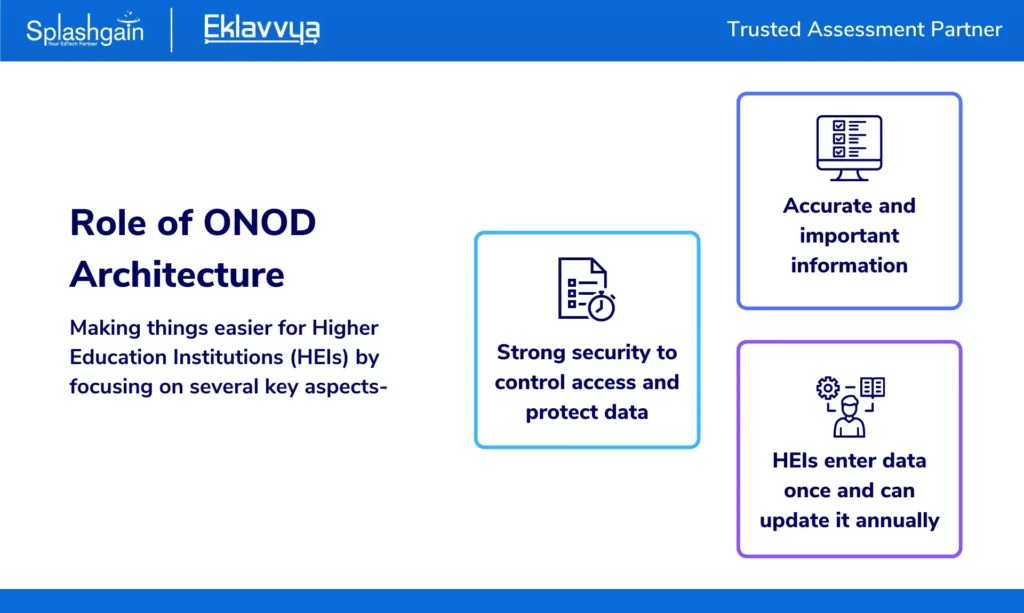
The new system aims to make things easier for Higher Education Institutions (HEIs) by focusing on several key aspects:
First, there will be strong security measures in place to control access and protect data.
Second, data will be collected in a uniform way, making sure it’s accurate and important information is included.
Third, HEIs will only need to enter data once and can update it annually, streamlining their tasks.
The system will manage data efficiently, adapting to different needs like approvals, accreditation, and rankings. It will also use additional data sources and community input to verify information, reducing the need for in-person visits. To simplify data sharing, the system will provide tools for different sources to contribute data.
This system will work well with existing digital frameworks and future plans for HEIs, ensuring compatibility with national initiatives. This includes governance frameworks like NDEAR, InDEA 2.0, and GATISHAKTI, as well as systems like SAMARTH and Swayam 2.0. It will also connect with platforms like the AISHE Portal, Digilocker, and the Academic Bank of Credits.
- Improved access control and security measures.
- Data was collected uniformly with quality checks.
- HEIs enter data once and update yearly.
- Flexible data management for approvals, accreditation, and rankings.
- Verification through additional data sources and community input.
- APIs for easy data contribution from various sources.
- Compatible with national digital frameworks (NDEAR, InDEA 2.0, GATISHAKTI).
- Connectivity with future HEI plans (SAMARTH, Swayam 2.0).
- Integration with AISHE Portal, DigiLocker, and Academic Bank of Credits.
ONOD Data Management
The Data Adaptation layer plays a crucial role in managing data effectively. This layer allows for flexible data management by utilizing a NoSQL database in XML format. Unlike traditional databases, NoSQL databases can adapt their structure as needed, using key-value pairs for storage. This means various types of data, whether structured or unstructured like documents, can all be represented in XML.
The key advantage is the schema-less nature of the data model. It can evolve with changing requirements, and each piece of data is linked to a unique key. This method accommodates diverse data types like integers, strings, arrays, or objects such as documents or images. Additionally, integrating geospatial data becomes seamless.
Reusing previously entered data is simplified, allowing for edits to capture only changes, aligning with the goal of streamlining processes. To illustrate, complex data like Program Outcomes can be easily stored in this system, represented in matrices such as PEO-PO and PO-CO. This approach facilitates assessments efficiently.
- NoSQL database in XML format enables flexible data handling.
- NoSQL databases adjust structure using key-value pairs.
- Accommodates structured and unstructured data, like documents.
- Schema-less data models evolve with changing needs.
- Unique keys link each data piece, supporting various types.
- Simplified reusing of prior data, and capturing changes.
- Seamless integration of geospatial data.
Key features of ONOD Platform
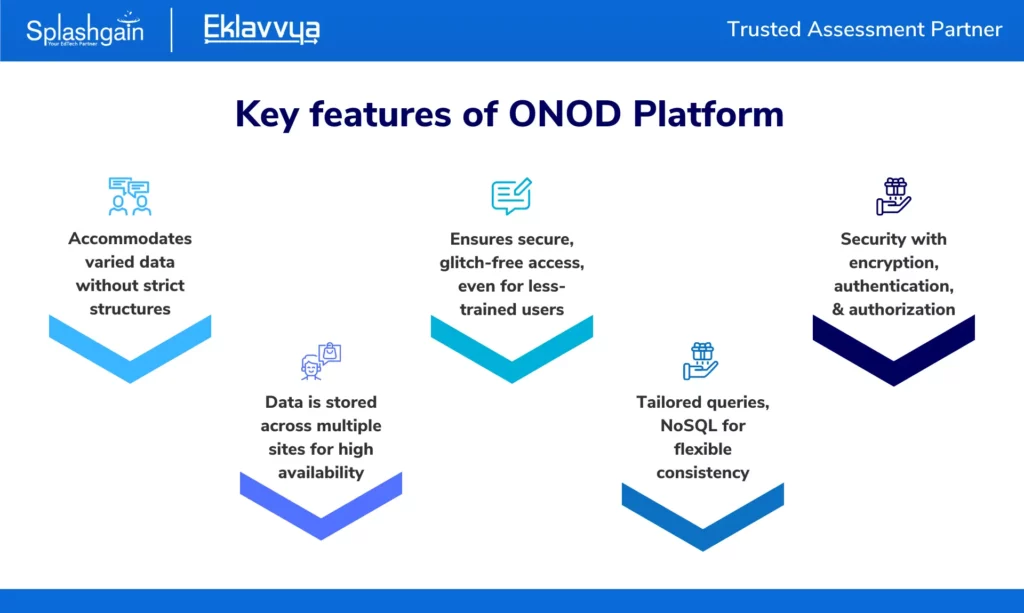
The ONOD consists of several important features that make it stand out. Its flexibility allows it to handle a wide range of different data types without needing rigid structures. Reliability is a major focus. Data can be stored in multiple locations, including mirror sites, to ensure that it remains available even if something goes wrong.
Then, robustness is a priority. The architecture is built to keep data safe from outside attacks and accessible to users who might not be very experienced with technology. It also offers an application-based way to ask questions. It uses the NoSQL approach which allows efficient management of data consistency.
Data recovery is made more flexible with the support of XML or similar languages. NoSQL databases can be used for both regular transactions and complex analysis, making them versatile tools for tasks like policy creation and ranking.
Security is one of the features that is working application-centric. This means that the portal includes processes like encryption, authentication, and authorization to keep data safe and controlled.
- Accommodates varied data without strict structures.
- Data is stored across multiple sites for high availability.
- Ensures secure, glitch-free access, even for less-trained users.
- Tailored queries, NoSQL for flexible consistency.
- Focus on security with encryption, authentication, and authorization.
Wrap-up
The ONOD platform, initiated by AICTE, is a significant step in enhancing higher education in India. It’s a centralized system that gathers information from universities and colleges through an online portal. This portal acts like a digital form where institutions share their data easily.
The goal is to create a reliable source of information for approval, accreditation, and ranking purposes. The platform ensures data accuracy by cross-referencing information and utilizes advanced technology to replace outdated manual methods.
The ONOD architecture focuses on simplifying tasks for Higher Education Institutions (HEIs). It maintains data security, collects uniform data, and allows institutions to update information annually. The system manages data effectively for different needs like approvals and rankings, using additional sources to verify accuracy. It integrates well with existing frameworks and future plans for HEIs, ensuring compatibility with national initiatives and platforms.
In simple terms, the ONOD platform is like a digital hub where universities share their information easily. It’s designed to make processes smoother and more reliable, while also ensuring the security of data. The system is adaptable to different needs, keeps data accurate, and fits well with national education initiatives. The platform’s architecture is smart, ensures data is safe, and can handle many different types of information. Overall, ONOD is a significant step towards improving higher education in India.
The ONOD platform is a centralized system created by AICTE to gather information from universities and colleges through an online portal.
The ONOD portal acts like a digital form where Higher Education Institutions (HEIs) share their data in one place, making it easier to access and manage.
The main goal is to create a reliable source of information for tasks like approval, accreditation, and ranking of universities and colleges.
HEIs only need to enter their data once and can update it on a yearly basis.


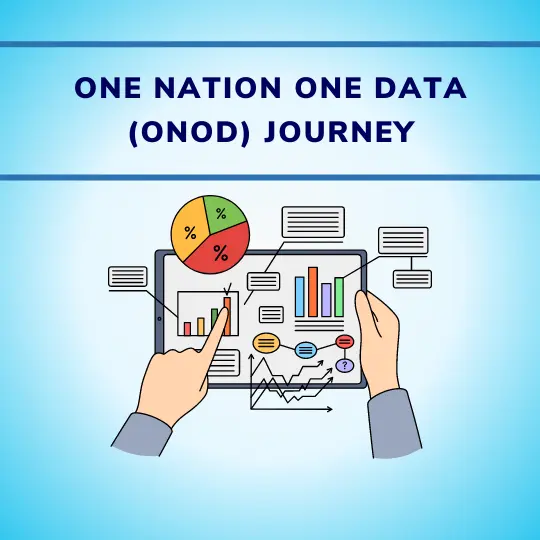

![How Government-Led Exams at 250+ Locations Are Setting New Standards of Integrity [Case Study]](https://www.eklavvya.com/blog/wp-content/uploads/2024/04/Enhancing-Exam-Integrity-Government-Certification-in-250-Locations-150x150.webp)
![Transforming Central Govt. Exams Evaluation: How Onscreen Marking is Leading the Charge [Case Study]](https://www.eklavvya.com/blog/wp-content/uploads/2024/04/How-Onscreen-Marking-Revolutionized-Central-Govt-Exams-Case-Study-1-150x150.webp)



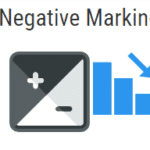











![How Onscreen Marking Revolutionized Central Govt Exams [Case Study]](https://www.eklavvya.com/blog/wp-content/uploads/2024/04/How-Onscreen-Marking-Revolutionized-Central-Govt-Exams-Case-Study-1-300x300.webp)
